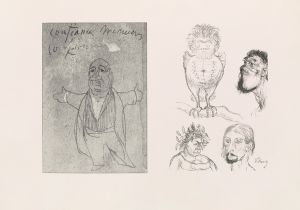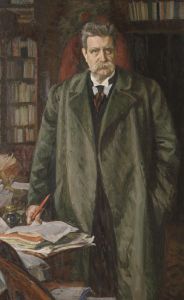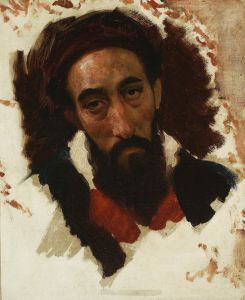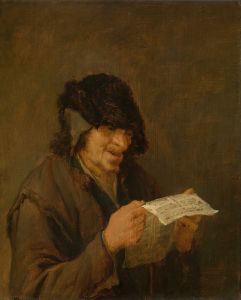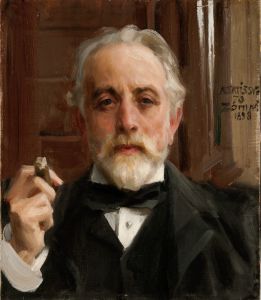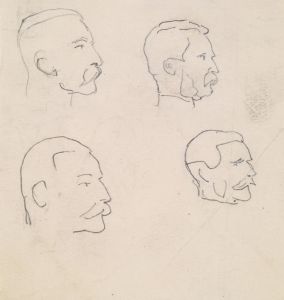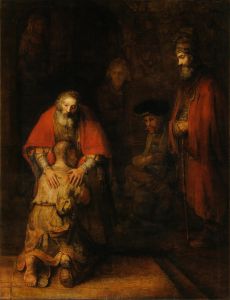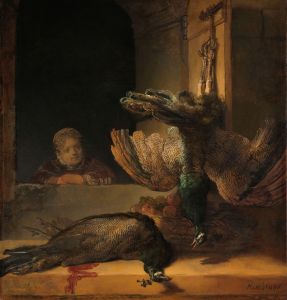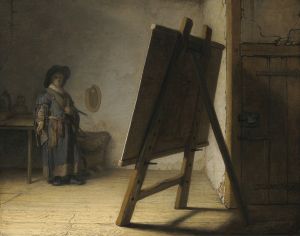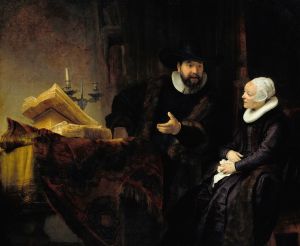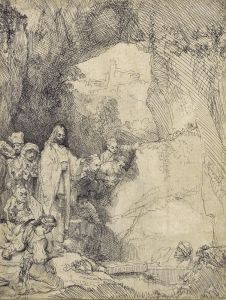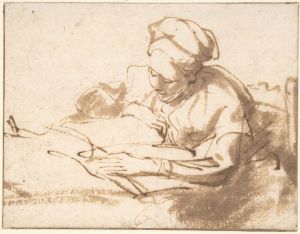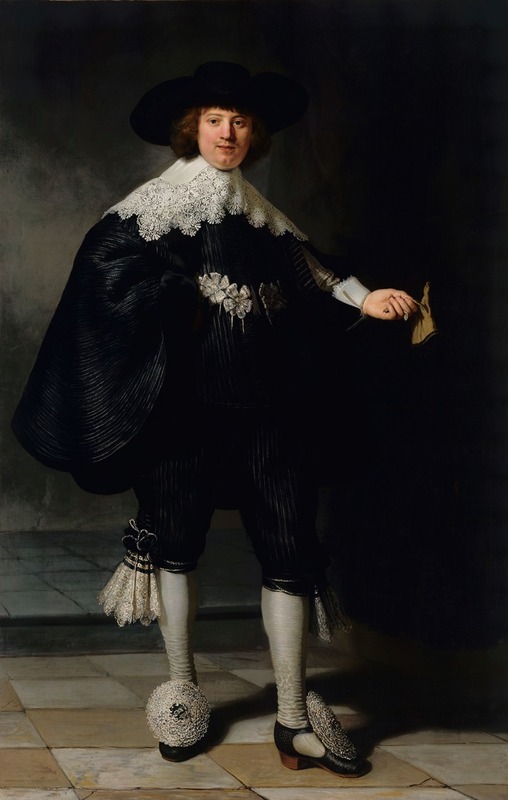
Marten Soolmans
A hand-painted replica of Rembrandt van Rijn’s masterpiece Marten Soolmans, meticulously crafted by professional artists to capture the true essence of the original. Each piece is created with museum-quality canvas and rare mineral pigments, carefully painted by experienced artists with delicate brushstrokes and rich, layered colors to perfectly recreate the texture of the original artwork. Unlike machine-printed reproductions, this hand-painted version brings the painting to life, infused with the artist’s emotions and skill in every stroke. Whether for personal collection or home decoration, it instantly elevates the artistic atmosphere of any space.
Marten Soolmans is a portrait painted by the renowned Dutch artist Rembrandt van Rijn in 1634. This painting is one of a pair of wedding portraits, the other being of Soolmans' wife, Oopjen Coppit. These portraits are significant examples of Rembrandt's work during his early years in Amsterdam, showcasing his mastery in capturing the likeness and character of his subjects.
Marten Soolmans was a wealthy young man from a family of Flemish origin. His father, Jan Soolmans, had moved to Amsterdam from Antwerp, and Marten was born into a prosperous environment. In 1633, Marten married Oopjen Coppit, who came from an affluent Amsterdam family. To commemorate their marriage, the couple commissioned Rembrandt to paint their portraits, which was a common practice among the wealthy elite of the time.
The portrait of Marten Soolmans is notable for its full-length depiction, a format that was relatively rare and reserved for the affluent. Rembrandt's choice to portray Soolmans in this manner highlights the subject's social status and wealth. In the painting, Soolmans is dressed in an elaborate black outfit with lace collars and cuffs, which was the height of fashion in the 17th century. His attire, along with the accessories such as the gloves and the walking stick, further emphasizes his status and sophistication.
Rembrandt's skillful use of light and shadow is evident in this portrait, a technique known as chiaroscuro, which he employed to give depth and volume to his subjects. The subtle play of light across Soolmans' face and clothing adds a sense of realism and presence, making the figure appear almost three-dimensional. This technique was one of Rembrandt's trademarks and contributed to his reputation as one of the greatest portrait painters of his time.
The portraits of Marten Soolmans and Oopjen Coppit remained together for centuries, passing through various private collections. In 2015, they were jointly acquired by the Rijksmuseum in Amsterdam and the Louvre in Paris, ensuring their preservation and public display. This acquisition was significant as it marked a rare instance of collaboration between two major museums, allowing the portraits to be exhibited alternately in both institutions.
The paintings are celebrated not only for their artistic merit but also for their historical significance, providing insight into the fashion, culture, and social dynamics of the Dutch Golden Age. Rembrandt's ability to capture the personality and status of his subjects has made these portraits enduring masterpieces, admired by art enthusiasts and scholars alike.
In summary, the portrait of Marten Soolmans by Rembrandt is a quintessential example of 17th-century Dutch portraiture, reflecting the artist's exceptional skill and the cultural context of the period. Through his meticulous attention to detail and innovative use of light, Rembrandt created a work that continues to captivate audiences and hold a prominent place in the history of art.





